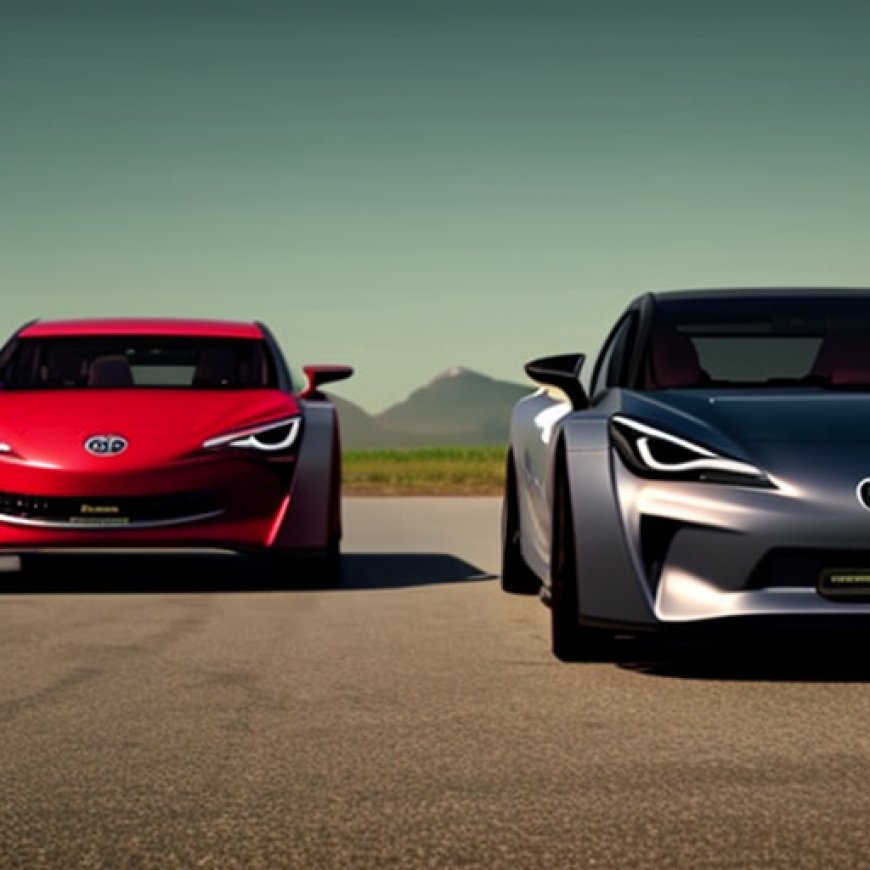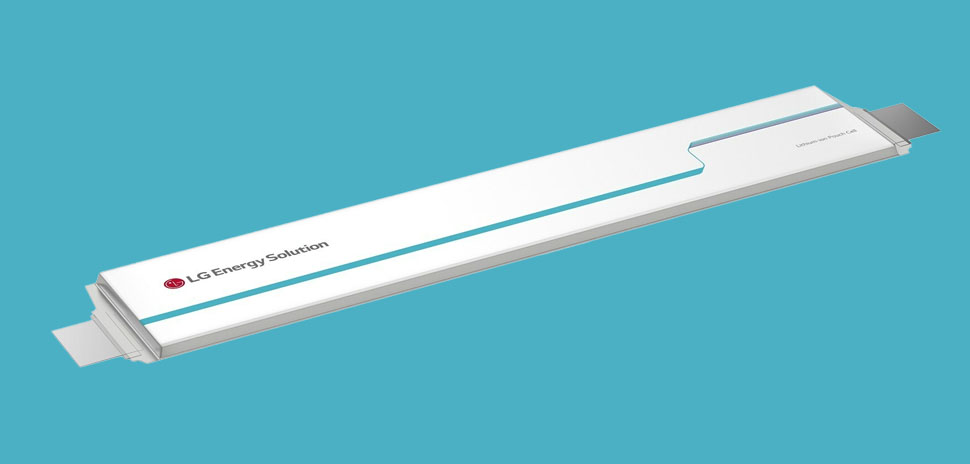Toyota’s New Electric Vehicles to Be Powered by LG Energy Solution Batteries Made in the U.S.
Toyota's New Electric Vehicles to Be Powered by LG Energy ... dallasinnovates.com


Toyota Partners with LG Energy Solution to Supply Lithium-Ion Batteries for Electric Vehicles

The battery modules consist of high-nickel NCMA (nickel, cobalt, manganese, aluminum) pouch-type cells to power vehicles efficiently. [Image: Toyota Motor North America]
Introduction
Toyota Motor North America has signed a long-term deal with LG Energy Solution to supply lithium-ion batteries for Toyota’s growing portfolio of battery electric vehicles (BEVs) in North America. This partnership aims to support Toyota’s sustainable development goals and its plans to offer 30 fully electric models globally and sell 3.5 million all-electric vehicles annually by 2030.
Partnership Details
- LG Energy Solution will provide 20 gigawatt-hours of battery modules annually starting in 2025.
- The batteries will be produced at an LG Energy Solution facility in Holland, Michigan.
- The battery modules will power Toyota BEVs assembled in North America, including a new model expected to be manufactured at Toyota’s Kentucky plant.
Optimized Performance and Safety
The partnership aims to create batteries with optimized performance, safety, and thermal management using LG Energy Solution’s innovative power solution. This will enhance the electric driving experience and provide peace of mind for BEV customers.
Toyota’s Growth Plans
Ted Ogawa, Toyota North America’s CEO, stated that the long-term relationship with LG Energy Solution supports the company’s growth plans for BEVs in North America.
LG Energy Solution’s Commitment
LG Energy Solution sees this agreement as a significant opportunity to bring large-scale progress toward electrification to North America. The company is investing approximately $4 billion to add new production lines exclusively for Toyota, further solidifying its position as a battery provider to top global automakers.
Carbon Reduction Plans
Toyota aims to reduce carbon emissions as much as possible and is committed to achieving carbon-neutral manufacturing by 2050. Securing a stable supply of lithium-ion batteries is crucial to achieving Toyota’s manufacturing and carbon reduction plans.
Conclusion
The partnership between Toyota and LG Energy Solution represents a significant step towards achieving sustainable development goals and accelerating the transition to electric vehicles. With their combined expertise and commitment to innovation, they aim to create high-performance, safe, and environmentally friendly battery solutions for the future.
SDGs, Targets, and Indicators Analysis
1. Which SDGs are addressed or connected to the issues highlighted in the article?
- SDG 7: Affordable and Clean Energy
- SDG 9: Industry, Innovation, and Infrastructure
- SDG 13: Climate Action
- SDG 17: Partnerships for the Goals
The article discusses Toyota’s partnership with LG Energy Solution to supply lithium-ion batteries for Toyota’s battery electric vehicles (BEVs). This addresses SDG 7, as it contributes to the development of affordable and clean energy solutions by promoting the use of electric vehicles. It also relates to SDG 9, as it involves the development of industry and infrastructure for sustainable technologies. Additionally, the focus on reducing carbon emissions aligns with SDG 13, which aims to combat climate change. Finally, the partnership between Toyota and LG Energy Solution represents a collaboration and partnership for sustainable development, supporting SDG 17.
2. What specific targets under those SDGs can be identified based on the article’s content?
- Target 7.2: Increase substantially the share of renewable energy in the global energy mix.
- Target 9.4: Upgrade infrastructure and retrofit industries to make them sustainable.
- Target 13.2: Integrate climate change measures into national policies, strategies, and planning.
- Target 17.16: Enhance the global partnership for sustainable development.
Based on the article’s content, the specific targets identified are related to increasing the share of renewable energy (Target 7.2) through the use of lithium-ion batteries for electric vehicles, upgrading infrastructure and industries to make them sustainable (Target 9.4) by promoting the development and production of battery electric vehicles, integrating climate change measures into national policies (Target 13.2) by reducing carbon emissions through the use of electric vehicles, and enhancing global partnerships for sustainable development (Target 17.16) through the collaboration between Toyota and LG Energy Solution.
3. Are there any indicators mentioned or implied in the article that can be used to measure progress towards the identified targets?
- Indicator 7.2.1: Renewable energy share in the total final energy consumption.
- Indicator 9.4.1: CO2 emissions per unit of value added.
- Indicator 13.2.1: Number of countries that have communicated their long-term low greenhouse gas emission development strategies.
- Indicator 17.16.1: Number of countries reporting progress in multi-stakeholder development effectiveness monitoring frameworks.
The article does not explicitly mention specific indicators. However, progress towards the identified targets can be measured using indicators such as the renewable energy share in the total final energy consumption (Indicator 7.2.1), CO2 emissions per unit of value added (Indicator 9.4.1), the number of countries that have communicated their long-term low greenhouse gas emission development strategies (Indicator 13.2.1), and the number of countries reporting progress in multi-stakeholder development effectiveness monitoring frameworks (Indicator 17.16.1).
SDGs, Targets, and Indicators Table
| SDGs | Targets | Indicators |
|---|---|---|
| SDG 7: Affordable and Clean Energy | Target 7.2: Increase substantially the share of renewable energy in the global energy mix. | Indicator 7.2.1: Renewable energy share in the total final energy consumption. |
| SDG 9: Industry, Innovation, and Infrastructure | Target 9.4: Upgrade infrastructure and retrofit industries to make them sustainable. | Indicator 9.4.1: CO2 emissions per unit of value added. |
| SDG 13: Climate Action | Target 13.2: Integrate climate change measures into national policies, strategies, and planning. | Indicator 13.2.1: Number of countries that have communicated their long-term low greenhouse gas emission development strategies. |
| SDG 17: Partnerships for the Goals | Target 17.16: Enhance the global partnership for sustainable development. | Indicator 17.16.1: Number of countries reporting progress in multi-stakeholder development effectiveness monitoring frameworks. |
Behold! This splendid article springs forth from the wellspring of knowledge, shaped by a wondrous proprietary AI technology that delved into a vast ocean of data, illuminating the path towards the Sustainable Development Goals. Remember that all rights are reserved by SDG Investors LLC, empowering us to champion progress together.
Source: dallasinnovates.com

Join us, as fellow seekers of change, on a transformative journey at https://sdgtalks.ai/welcome, where you can become a member and actively contribute to shaping a brighter future.







